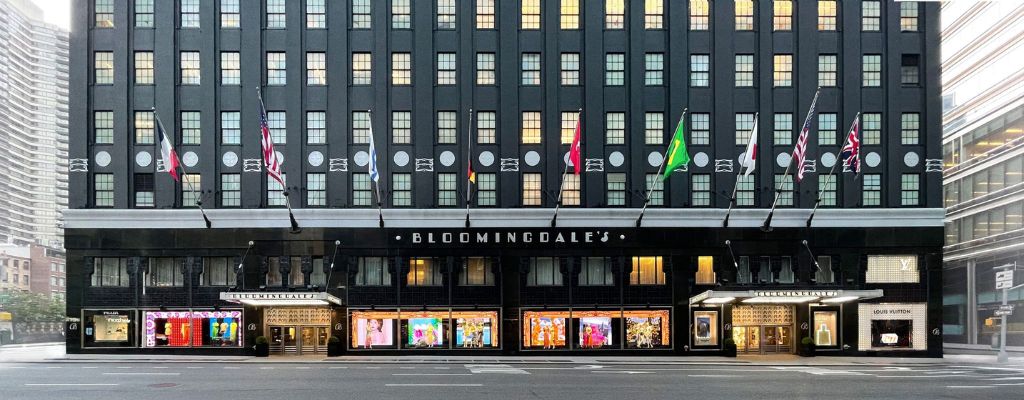For nearly 150 years, Bloomingdale’s has stood as an iconic pillar of style and culture in the fashion world, a place where innovation meets tradition. Known for its unique assortment of high-end brands and cutting-edge fashion, Bloomingdale’s has always been more than just a department store. It has been a haven for fashion rebels and trendsetters, continually redefining what it means to shop for luxury. This blog explores Bloomingdale’s storied history, its commitment to innovation, and its impact on fashion culture.
The Beginning of a Fashion Legacy: From One Store to a National Brand
Bloomingdale’s began its journey in 1861, founded by brothers Joseph and Lyman Bloomingdale. Originally a small store in New York City’s Lower East Side, it catered to the growing demand for European fashions. Unlike other retailers of the time, Bloomingdale’s offered a diverse range of goods under one roof, creating a shopping experience that was revolutionary for its era. As its popularity grew, the store moved to 59th Street and Lexington Avenue, a location that would become synonymous with luxury shopping.
Over the years, Bloomingdale’s expanded from a single New York City location into a national brand, becoming a destination for those seeking the latest in fashion, home décor, and beauty. Today, it operates stores across the United States and maintains a strong online presence, all while remaining true to its founders vision of offering a curated selection of unique products.

Breaking the Mold: A Hub for Fashion Innovators
Bloomingdale’s has always been at the forefront of the fashion industry, known for its ability to spot trends before they become mainstream. It was one of the first department stores to showcase designers like Ralph Lauren, Donna Karan, and Calvin Klein, giving them a platform that catapulted their careers to international acclaim. By consistently highlighting emerging designers, Bloomingdale’s has maintained its status as a hub for innovation and creativity.
In addition to nurturing new talent, Bloomingdale’s has broken the mold by hosting unique fashion shows and in-store events that celebrate the creativity and artistry of fashion. This commitment to innovation has solidified its reputation as a place where fashion rebels and trendsetters alike can discover the next big thing.
The Iconic Brown Bag: A Symbol of Style and Status
The introduction of the “Big Brown Bag” in the 1970s marked a turning point in Bloomingdale’s history, becoming an instant symbol of luxury and style. Designed by Massimo Vignelli, the simple yet bold design captured the essence of Bloomingdale’s brand—modern, chic, and approachable. It quickly became a status symbol, with customers proudly showcasing their purchases in the iconic bag.
The Big Brown Bag’s influence extended beyond fashion; it became a cultural icon, referenced in movies, TV shows, and even literature. Today, it remains a symbol of the Bloomingdale’s shopping experience, representing both the glamour and the accessibility that have defined the store for decades.
Innovative Marketing: Creating a Unique Shopping Experience
Bloomingdale’s marketing strategies have always set it apart from other retailers. In the 1970s, the store famously introduced the “Bloomingdale’s Insider” campaign, which featured famous personalities and stylish New Yorkers wearing the latest fashion trends. This approach not only highlighted the store’s diverse offerings but also created an aspirational lifestyle that customers wanted to be a part of.
The retailer’s innovative spirit continues today with immersive in-store experiences, exclusive collaborations with designers, and unique pop-up shops. These strategies keep Bloomingdale’s at the forefront of the shopping experience, appealing to both loyal customers and new generations of fashion enthusiasts.
Cultural Impact: Beyond Just Fashion
Bloomingdale’s influence extends beyond the realm of fashion; it has become a cultural institution in its own right. The store has been featured in countless films and TV shows, from “Friends” to “Sex and the City,” reinforcing its status as a beloved New York landmark. Additionally, Bloomingdale’s flagship store on 59th Street has hosted numerous events that celebrate art, music, and pop culture, further cementing its place in the cultural zeitgeist.
Bloomingdale’s is also known for its charitable initiatives, partnering with various organizations to support causes like breast cancer research, education, and community development. These efforts reflect its commitment to making a positive impact beyond the world of retail.
A Look to the Future: Evolving While Honoring Tradition
While Bloomingdale’s is deeply rooted in its history, it continues to evolve with the times. The store has embraced digital innovation, expanding its online presence and creating a seamless omnichannel experience that bridges the gap between in-store and online shopping. Initiatives like virtual styling sessions, personalized shopping experiences, and a user-friendly app make Bloomingdale’s accessible to a new generation of shoppers.
Bloomingdale’s also remains committed to sustainability, introducing eco-friendly practices and products to meet the growing demand for responsible fashion. By balancing tradition with innovation, Bloomingdale’s ensures it will remain a haven for fashion rebels and trendsetters for years to come.

Conclusion: The Enduring Appeal of Bloomingdale’s
Bloomingdale’s is more than just a department store; it is a fashion institution that has shaped and been shaped by the cultural fabric of America. Its commitment to innovation, unique marketing strategies, and cultural engagement have made it a haven for fashion rebels and trendsetters for nearly 150 years. As it continues to evolve and adapt to new market trends, Bloomingdale’s remains a beloved destination for those who seek style, sophistication, and a shopping experience unlike any other.
